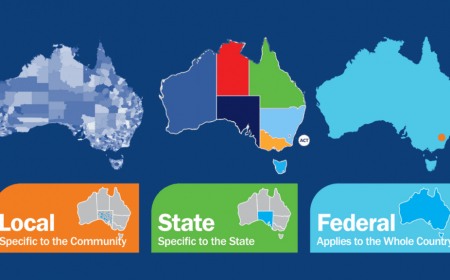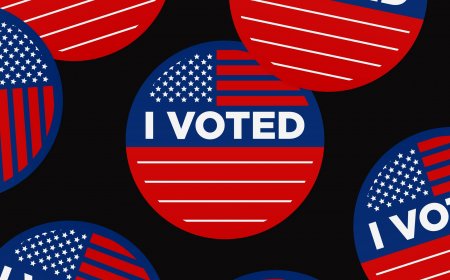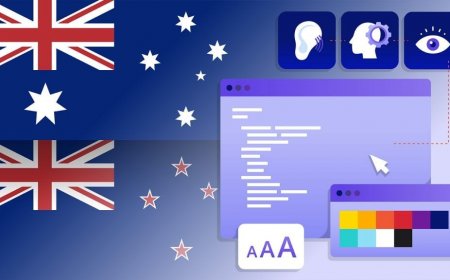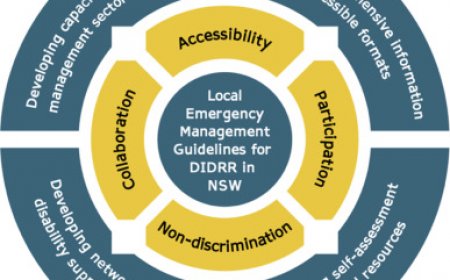US Flight Booking Tips: Save Money on Your Next Trip
Discover expert tips to save money on your next US flight booking. Learn how to find the best deals, avoid hidden fees, and maximize savings with our comprehensive guide. Start planning today!
Booking a flight within the United States can often feel overwhelming, especially when trying to find the best deals. With fluctuating prices, limited seat availability, and countless airlines to choose from, securing an affordable ticket requires strategy, patience, and insider knowledge. Whether you're planning a vacation, visiting family, or traveling for business, this comprehensive guide will equip you with proven tips and tricks to save money on your next US flight booking. Let’s dive into the details.
Understanding the Basics of Flight Pricing
How Airlines Set Ticket Prices
Airlines use dynamic pricing algorithms to adjust ticket costs based on factors such as demand, seasonality, and competition. These algorithms analyze data in real-time, considering variables like historical booking patterns, current inventory levels, and even weather forecasts. Understanding these variables is key to identifying the best times to book and fly.
For example, flights tend to be more expensive during peak travel seasons like summer holidays (Memorial Day, Fourth of July, Labor Day), Thanksgiving, and Christmas. During these periods, demand surges as families and individuals plan vacations or reunions. Conversely, off-peak periods, such as mid-January to early March, often offer significant savings due to reduced demand.
Subheading: The Role of Supply and Demand
The basic principle of supply and demand heavily influences flight prices. High-demand routes (e.g., New York to Los Angeles) are typically pricier than less popular ones. Additionally, weekends and holidays see increased demand, driving up costs. By targeting less busy days and times, travelers can secure cheaper fares.
For instance, flying on a Tuesday morning instead of a Friday evening can result in savings of up to 30%. Similarly, avoiding major events or conferences in your destination city can help you avoid inflated prices caused by temporary spikes in demand.
When to Book Your Flight
The Ideal Booking Window
Experts recommend booking domestic US flights 1 to 3 months in advance for the best balance between price and availability. Booking too early may result in inflated prices due to limited inventory, while waiting until the last minute often leads to skyrocketing costs.
Subheading: Seasonal Considerations
- Peak Seasons: Avoid booking during major holidays unless absolutely necessary. If you must travel during these times, aim to book at least 4-6 months ahead.
- Off-Peak Seasons: Traveling during shoulder seasons (spring and fall) can yield substantial discounts. For example, flying in late April or early May avoids both spring break crowds and summer rush.
Additionally, consider the time of year when planning international connections. Flights to Europe, Asia, or other continents departing from the US are often cheaper during the winter months (January to March) due to lower demand.
Best Days to Fly
Tuesdays, Wednesdays, and Saturdays are generally the cheapest days to fly within the US. These days see lower passenger volumes, prompting airlines to offer discounted rates. Conversely, Fridays and Sundays are the most expensive due to business and leisure travelers.
Subheading: Weekend Getaways vs. Weekday Trips
For short trips, flying midweek (Tuesday to Thursday) is almost always cheaper than weekend getaways. Additionally, extending your stay by one or two days can sometimes reduce overall costs, as round-trip tickets booked over weekends are typically more expensive.
How to Find the Best Deals
Use Flight Comparison Websites
Flight comparison platforms like Google Flights , Skyscanner , and Kayak allow users to compare prices across multiple airlines quickly. These tools also provide insights into price trends, helping you determine whether to book immediately or wait for a potential drop.
Subheading: Setting Price Alerts
Most flight search engines offer price alert features that notify you when fares decrease. This proactive approach ensures you never miss a bargain. For instance, setting alerts for specific routes (e.g., Chicago to Miami) can help you monitor fluctuations and strike when prices hit their lowest point.
Additionally, some platforms like Google Flights allow you to view a calendar of prices for an entire month, making it easier to identify the cheapest dates to fly.
Consider Nearby Airports
Sometimes, flying into or out of smaller regional airports can save you hundreds of dollars. For example, instead of booking a direct flight to Los Angeles International Airport (LAX), consider nearby alternatives like Long Beach Airport (LGB) or Burbank Bob Hope Airport (BUR). While these options may require slightly longer commutes, the cost savings often outweigh the inconvenience.
Subheading: Hidden Gems in Regional Airports
Regional airports often serve budget carriers like Allegiant Air or Frontier Airlines, which operate on leaner business models and pass the savings onto customers. Researching secondary airports can uncover hidden gems that aren’t immediately obvious when searching for flights.
Flexible Travel Dates? Here’s How to Maximize Savings
Search for Flexible Date Options
If your schedule allows, use flexible date search features on platforms like Google Flights and Skyscanner. These tools display fare comparisons across different departure and return dates, enabling you to identify the cheapest combination.
Subheading: Weekend Getaways vs. Weekday Trips
For short trips, flying midweek (Tuesday to Thursday) is almost always cheaper than weekend getaways. Additionally, extending your stay by one or two days can sometimes reduce overall costs, as round-trip tickets booked over weekends are typically more expensive.
Explore Multi-City Itineraries
If you’re open to exploring multiple destinations, consider booking a multi-city itinerary. For example, instead of flying directly from New York to San Francisco, you could add a stopover in Denver or Las Vegas. This not only breaks up the journey but can also lead to significant savings compared to purchasing separate tickets.
Subheading: Stopovers as Mini-Vacations
Some airlines, like Icelandair and Turkish Airlines, actively promote stopover programs that allow passengers to spend a few days in a connecting city at no extra cost. For instance, Icelandair offers free stopovers in Reykjavik for travelers flying between North America and Europe, turning a layover into a mini-vacation.
Hidden Fees and How to Avoid Them
Beware of Add-On Costs
While base fares might appear attractive, hidden fees can quickly add up. Common charges include baggage fees, seat selection fees, and in-flight meal costs. To avoid surprises:
- Pack Light: Opt for carry-on luggage if possible, as checked baggage fees can range from $30 to $50 per bag.
- Choose Basic Economy Wisely: Basic economy tickets are cheaper but come with restrictions, such as no seat selection until check-in and non-refundable policies.
Subheading: Credit Card Perks
Many credit cards offer travel benefits like free checked bags, priority boarding, and discounts on in-flight purchases. For frequent travelers, using a card that aligns with your preferred airline can lead to significant savings.
For example, the Chase Sapphire Preferred® Card offers 2x points on travel purchases, including flights, and includes a $50 annual hotel credit. Similarly, the American Express Gold Card provides up to $120 annually in dining credits, which can offset meal expenses during layovers.
Loyalty Programs and Membership Benefits
Join Frequent Flyer Programs
Signing up for airline loyalty programs is a no-brainer for regular travelers. Accumulating miles through flights, credit card spending, and partner promotions can earn you free tickets, upgrades, and other perks. Even occasional flyers can benefit from these programs, as many airlines offer tiered rewards systems.
Subheading: Co-Branded Credit Cards
Co-branded airline credit cards often provide sign-up bonuses worth thousands of miles, along with annual fee waivers for the first year. Examples include the Delta SkyMiles® Gold American Express Card and the United Explorer Card.
Explore Alliances and Partnerships
Major US carriers belong to global alliances like Star Alliance, Oneworld, and SkyTeam. By leveraging these partnerships, you can redeem miles on partner airlines, access lounges worldwide, and enjoy reciprocal benefits.
For example, members of United Airlines’ MileagePlus program can earn and redeem miles on Lufthansa, Swiss International Air Lines, and other Star Alliance partners. This flexibility makes it easier to accumulate and utilize rewards across a broader network.
Alternative Booking Methods
Book Directly Through Airlines
While third-party websites are convenient, booking directly through airline websites can sometimes unlock exclusive deals. Many carriers offer price-match guarantees and waive change fees for direct bookings.
Subheading: Error Fares and Flash Sales
Occasionally, airlines make pricing errors or release flash sales offering steep discounts. Following deal-hunting forums like FlyerTalk and subscribing to newsletters from budget airlines can keep you informed about these rare opportunities.
Consider Budget Airlines
Low-cost carriers like Southwest Airlines , JetBlue , and Allegiant Air often provide competitive rates for domestic travel. However, be mindful of additional fees and limited route networks when choosing these options.
Subheading: Pros and Cons of Budget Airlines
Budget airlines excel in affordability but may lack amenities like in-flight entertainment or complimentary snacks. Additionally, their rigid cancellation policies can pose challenges for travelers with uncertain plans. Weigh these factors carefully before committing to a low-cost carrier.
Special Discounts and Promotions
Student and Military Discounts
Certain airlines offer discounted fares for students, military personnel, and seniors. For example, United Airlines provides reduced rates for active-duty service members, while Delta Air Lines partners with organizations like StudentUniverse to cater to younger travelers.
Subheading: Group Travel Rates
Traveling with a group? Many airlines offer discounted rates for parties of 10 or more. Contact the airline’s group travel department directly to negotiate favorable terms.
Last-Minute Booking Strategies
Same-Day Standby Options
If your plans are flexible, consider utilizing same-day standby policies offered by some airlines. This allows you to board earlier flights at no extra cost if seats are available.
Subheading: Last-Minute Deal Apps
Apps like Hopper and Scott’s Cheap Flights specialize in finding last-minute deals. While risky, this method can occasionally yield deeply discounted tickets for spontaneous travelers.
Additional Money-Saving Tips
Avoid Peak Travel Hours
Flights departing early in the morning or late at night are typically cheaper than those scheduled during prime hours. Adjusting your schedule accordingly can lead to noticeable savings.
Subheading: Bundle Packages
Booking flights, hotels, and rental cars together through online travel agencies (OTAs) like Expedia or Priceline can result in bundled discounts. Always compare these packages against individual bookings to ensure they’re truly cost-effective.
Accessibility
Travelers with disabilities or special needs should contact airlines directly to inquire about accessible seating, wheelchair assistance, and other accommodations. Most US carriers comply with ADA regulations, ensuring a smooth and comfortable journey for all passengers.
How to Plan Your Next Flight Booking
Planning a trip involves more than just finding cheap flights. Start by setting a realistic budget and researching destinations based on your interests. Use the tips outlined above to secure affordable airfare, then focus on arranging accommodations, transportation, and activities. Remember to factor in potential expenses like meals, attractions, and souvenirs to avoid overspending.
Conclusion
Booking a flight within the US doesn’t have to break the bank. By understanding how airlines price tickets, leveraging technology, and taking advantage of promotions, you can significantly reduce your travel expenses. Whether you’re a seasoned traveler or embarking on your first adventure, these strategies will help you save money while maximizing convenience and comfort. Happy travels!
10 FAQs with Answers
-
What is the best time to book a domestic US flight?
Aim to book 1-3 months in advance for optimal pricing. -
Are budget airlines worth it?
Yes, but be aware of additional fees for baggage and seat selection. -
Can I get refunds if prices drop after booking?
Some airlines and OTAs offer price-drop protection; check their policies. -
Do flight prices increase after searching multiple times?
Not necessarily, though cookies may track your searches—use incognito mode. -
Which days are cheapest to fly domestically?
Tuesdays, Wednesdays, and Saturdays tend to have lower fares. -
Should I clear my browser cache before searching for flights?
Clearing cookies or using private browsing can prevent targeted pricing. -
How do I find error fares?
Follow deal-hunting forums and subscribe to alerts from specialized services. -
Is it cheaper to book one-way or round-trip tickets?
Round-trip tickets are usually more economical, but exceptions exist. -
Can I use miles to upgrade my seat?
Yes, many airlines allow mile redemption for upgrades. -
What should I do if my flight gets canceled?
Contact the airline immediately to rebook or request compensation.
What's Your Reaction?
 Like
0
Like
0
 Dislike
0
Dislike
0
 Love
0
Love
0
 Funny
0
Funny
0
 Angry
0
Angry
0
 Sad
0
Sad
0
 Wow
0
Wow
0













































